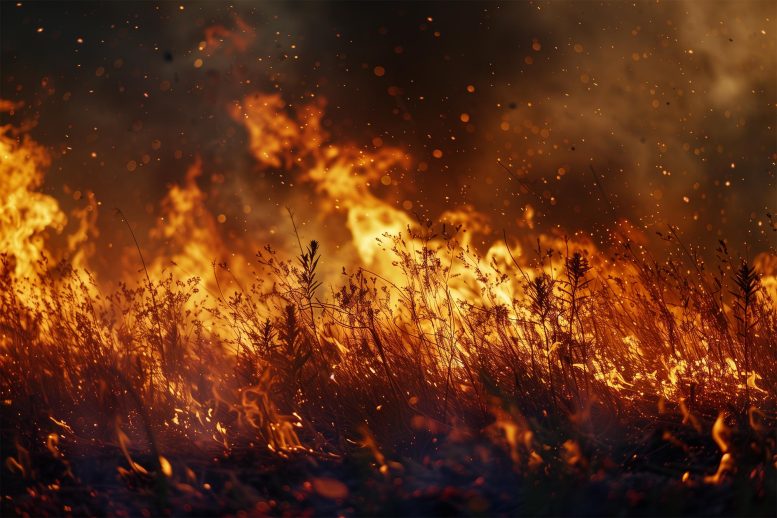Corral Fire Claims Title as California’s Biggest Blaze of 2024


In early June 2024, the Corral Fire rapidly spread through grasslands near Tracy, California, fueled by strong winds and dry conditions. The fire, which started near Lawrence Livermore National Laboratory, eventually covered over 14,000 acres, becoming the largest wildfire in California for the year. Credit: SciTechDaily.com
Strong winds and ample fuel helped spread flames over 14,000 acres of grassland in California’s San Joaquin County.
In early June 2024, blazes from the Corral Fire spread rapidly in grasslands near Tracy, California. Propelled by strong winds, the flames spread over 14,000 acres, making it the largest wildland fire in the state so far this year.
The fire ignited on June 1 in the vicinity of Lawrence Livermore National Laboratory Site 300, 8 miles (13 kilometers) southwest of Tracy. Dry grass and wind gusts of up to 40 miles per hour made the fire difficult to contain, according to Cal Fire. The fire spread east, charring over 12,000 acres by the morning of June 2.
Satellite Imagery Analysis
The OLI-2 (Operational Land Imager-2) on Landsat 9 captured this image (lower) of the blackened hillside on June 2. For comparison, the upper image shows the same area on May 17.
“The fire started on the leeward side of the Altamont Pass—a gap in the Diablo Range—which has notoriously high winds,” said Jessica McCarty, branch chief of biospheric sciences at NASA’s Ames Research Center. “June 1 was especially windy, and the leeward side of the pass is also drier, providing fuel for the fire.”
Although 2023 was a relatively quiet year for wildfires in California, it’s not clear how 2024 will fare. Two years of relatively wet springs have built up vegetation in the region, said Matthew Johnson, a research scientist at Ames. Both Johnson and McCarty are residents of the East Bay area. “Once the vegetation dries out, that increases fire risk,” Johnson added.
Fire Containment and Changing Weather Conditions
The Corral Fire was 94 percent contained by the morning of June 5. But a ridge of high pressure brought high temperatures that day to California and much of the U.S. Southwest, which can elevate fire risk and make it unsafe for wildland firefighters in the region, McCarty said. Tracy, California, was under an excessive heat warning, with forecasters calling for a high of 103 degrees Fahrenheit (39 degrees Celsius).
McCarty and colleagues at Ames are partnering with the California State University, Stanislaus to offer the Fire & Air program, an internship for undergraduates to work with both NASA scientists and CSU Stanislaus faculty to study the air quality impacts and causes of wildfires.
NASA Earth Observatory images by Wanmei Liang, using Landsat data from the U.S. Geological Survey.




